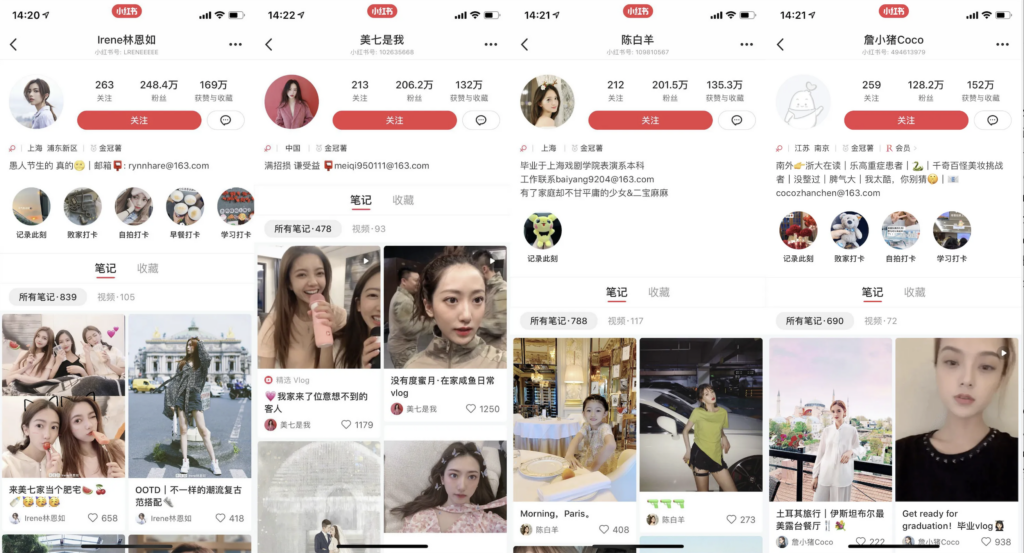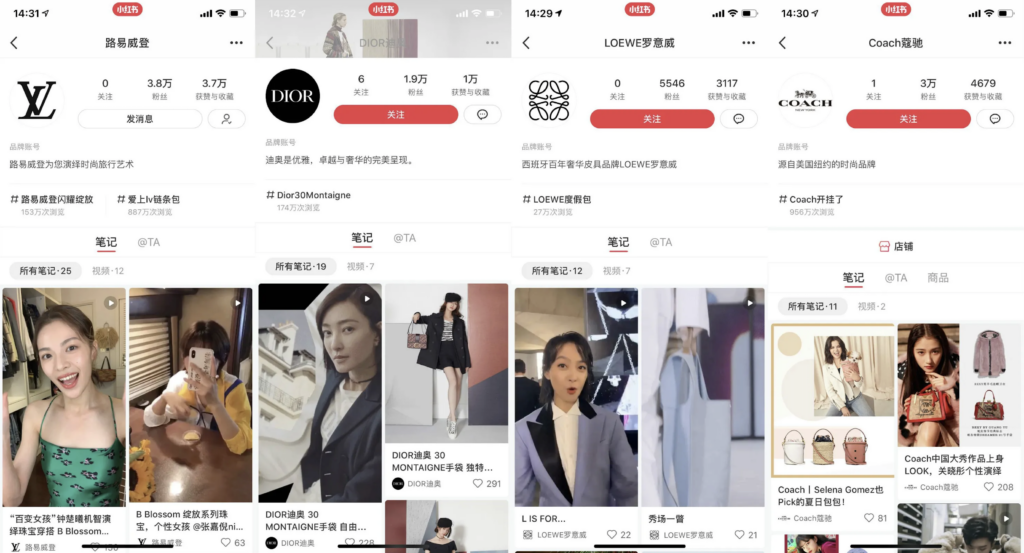Little Red Book, an EVERYTHING app for GenZ people in China

Described as an “Instagram-meets-Pinterest-meets-Amazon” platform, Little Red Book has become one of the most popular social media apps in China in recent years.
For GenZ people in China, Little Red Book (Xiaohongshu) is now becoming an integrated platform alternative to the combination of Google, Instagram, Pinterest, Youtube, LinkedIn, TripAdvisor, Yelp, Zillow, Amazon, etc., encroaching almost every corner of their lives. Little Red Book was founded by Miranda Qu and Charlwin Mao in 2013. The platform allows users and influencers to post, discover, and share content through photos, text, videos, live streaming, etc. With 200 million monthly active users, Little Red Book is one of the most popular and trusted social media apps in China. According to a CBN data report, around 70% of Little Red Book users are female and over 80% are between 18-34. Besides, 50% of users come from first and second-tier cities1 with high disposable income and cultural openness. It makes Little Red Book a great platform for young and wealthy customers.
Inspire rather than search: purchases happen out of serendipity
Before Little Red Book became popular, Chinese people switched between different review platforms for advice on travel destinations, restaurants, and products. However, people have to actively search for something even if they don’t know what they need. So, the ranking on those platforms often blocks the discovery of new or less-known but great things. Besides, as those traditional review platforms target customers from all segments, young people often have a difficult time finding recommendations that they’re truly interested in. However, Little Red Book effectively solves all pain points from those platforms.
Firstly, people don’t need to search for keywords all the time. People often don’t know what exactly they want or even don’t know they want something, so Little Red Book aims to inspire rather than recommend. Secondly, as the app has a great recommendation engine based on demographics and past views, likes, and search history, most users are very happy about the content recommended to them. The user engagement and user retention are very high. Thirdly, the high-quality posts make users trust the platform a lot—81% of Little Red Book users are willing to buy a product after viewing content4. Lastly, the content is also a mix of different things, so people won’t feel tired viewing similar information-heavy posts.
A community to share life and experience
User-generated content is key for Little Red Book. Little Red Book builds a community where users share and get useful content and connect with people with similar interests. On other social media platforms such as Instagram and YouTube, often there is difficult growth or bottleneck for bloggers. On Little Red Book, however, with a large number of active users and high user engagement, even a new user or normal user can easily get his or her posts viewed by thousands of people of interest via the recommendation algorithm. This further motivates users to create content and enrich the community. Review is also an important part of Little Red Book. People like to interact with content they’re familiar with or interested in, so there are many high-quality reviews for posts. On the other side, those high-quality reviews also make the posts more comprehensive and less biased for other interested people.
Nowadays, many people also like to share their life stories such as relationships, job seeking, and school experiences. This gives users a chance to know people and stories outside of their zone. Many users, especially international students, use the app as a “friend seeking app” to find friends when they go to a new city. Thus, Little Red Book demonstrates its effectiveness in building a real offline community for its users.
E-commerce
To build user trust, Little Red Book resolutely refuses to use advertising as its business model. Instead, it makes money via traditional e-commerce. In 2015, Little Red Book started commerce with the “Lonely Planet for Shopping.” Little Red Book makes strategic partnerships with brands and maintains its own inventory instead of selecting a marketplace model5. Now, users can purchase products directly from the brand after viewing views. The quality and authenticity are ensured.
China’s e-commerce revenue is expected to reach $1,309.5 billion by 2024, with Little Red Book being a key player. As the platform has maintained a double-digit user growth rate, it is becoming one of the leading platforms in China’s cross-border e-commerce market6. With Little Red Book’s high engagement, user trust, and strategy for an expanding user base, the app is poised for scalability and sustainability.
Citations:
1. “2022年活跃用户画像趋势报告(小红书平台).” CBNData, www.cbndata.com/report/2891/detail?isReading=report&page=9. Accessed 7 Nov. 2023.
2. “Xiaohongshu.” Wikipedia, Wikimedia Foundation, 4 Nov. 2023, en.wikipedia.org/wiki/Xiaohongshu.
3. YouTube, YouTube, 17 June 2022, https://www.youtube.com/watch?v=_yvSAXXbWMM. Accessed 7 Nov. 2023.
4. “Complete Guide on Advertising on Xiaohongshu (Little Red Book).” FirstCom Academy, 18 July 2023, www.fca.edu.sg/blog/advertising-on-xiaohongshu-little-red-book/#:~:text=XiaoHongShu%20User%20Demographics&text=88.80%25%20female%20users%2C%2011.20%25,46.39%25%20users%20aged%2018%20%E2%80%93%2024.
5. Teo, Alicia. “Where Content Meets Commerce: 小红书 Little Red Book.” Medium, Medium, 11 Jan. 2020, medium.com/@aliciateolixia/where-content-meets-commerce-%E5%B0%8F%E7%BA%A2%E4%B9%A6-little-red-book-4bffa17f39f1.
6. Brain. “Explaining Little Red Book and Its Market Potential for Premium Brands • Melchers China.” Melchers China, 5 Aug. 2020, www.melchers-china.com/posts/explaining-little-red-book-and-its-market-potential-for-premium-brands/.







Thank you for sharing! Great post. Makes me want to join Little Red Book. It’s fascinating how it has become an all-encompassing platform, replacing several other popular apps in the lives of GenZ users. I see that you mention the user base is largely young adult females. Given Little Red Book’s impressive growth and influence, how does the platform plan to expand its user base and reach even wider demographics in the future? Are there specific strategies in place to target new markets or demographics that may not be currently utilizing the platform?
Thanks for the post Serena! Little Red Book seems like a great product, and I love how it avoids many inherent conflicts of interest by staying away from a traditional advertising model. It appears that it built its initial popularity by catering to people in 2nd tier-and-below cities, who were not the typical audiences for social apps, and since then, has become the dominant player through a tremendous feat of user land grab.
My concern with all super-apps is that for more professional use cases (such as house buying or trip planning), whether they can continue to serve those use cases appropriately without diluting their value for all parties. For example, if I want to buy a house, perhaps LRB can be a good place to initially browse, but can the app be disciplined and sophisticated enough to cover all the nuances and details that go into the house-buying experience. We often learn that to truly create a differentiated product, you need to be obsessed with a niche, and while theoretically nothing is stopping any company from doing that, the reality is that when it comes to resource prioritization, it’s impossible to prioritize everything. Given LRB’s success thus far, I’d be interested in learning more about whether it was just due to their scale, or if they’ve developed techniques to empower their teams to deeply prioritize many projects simultaneously.